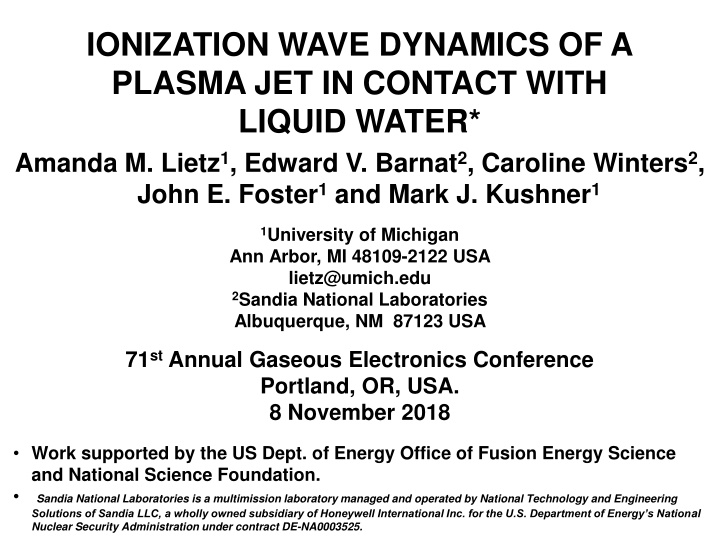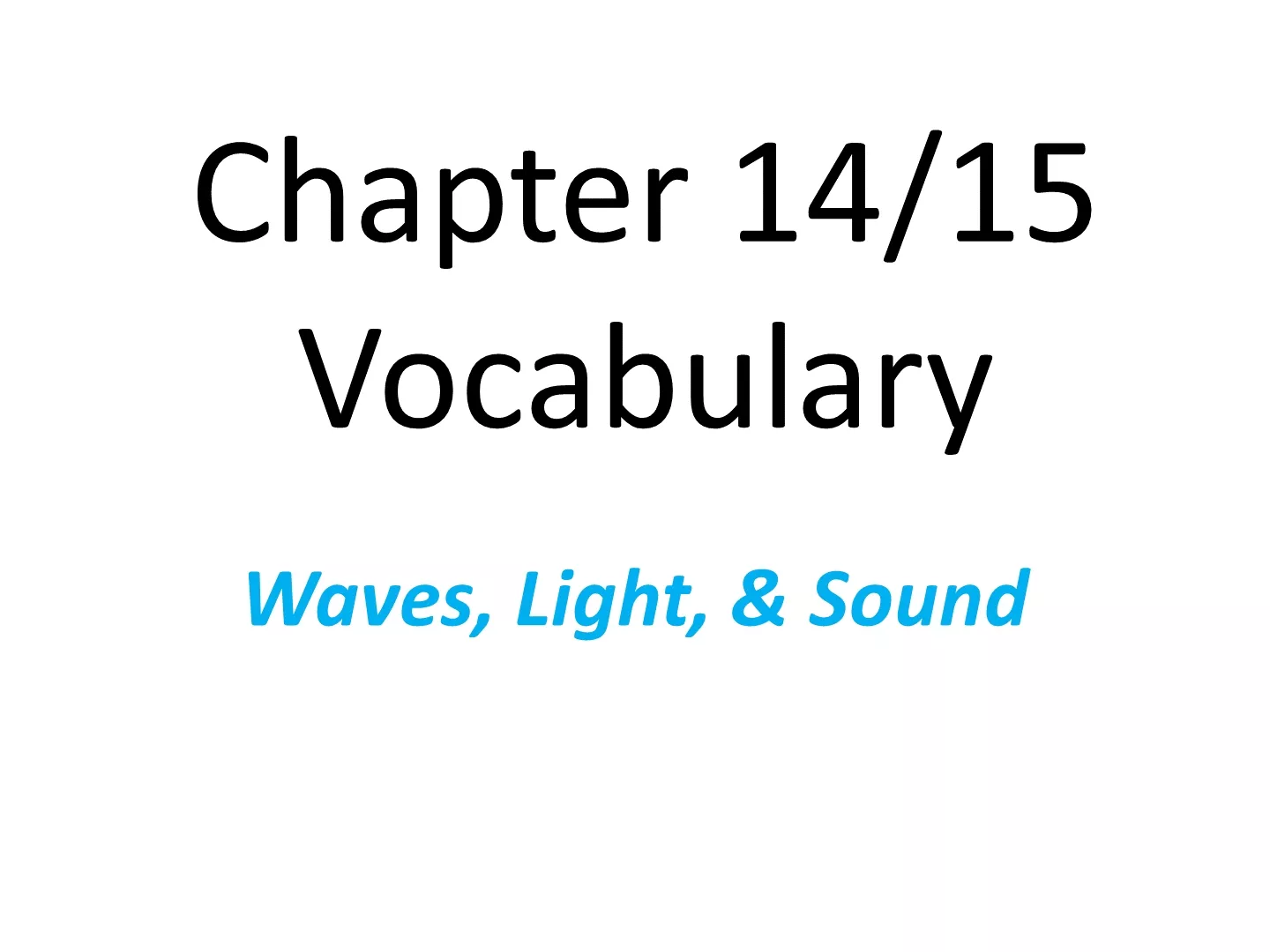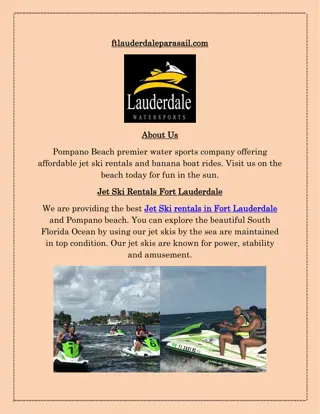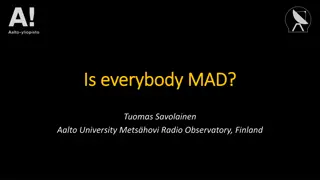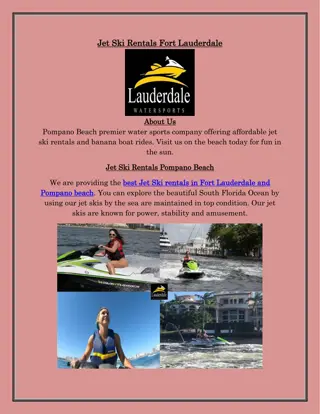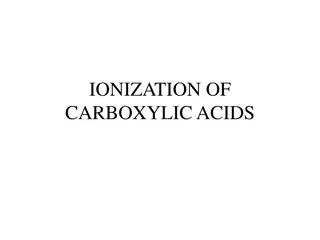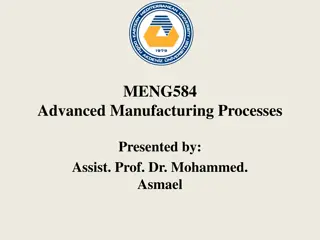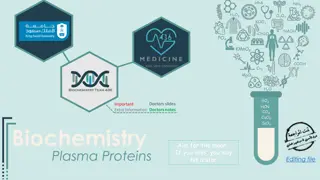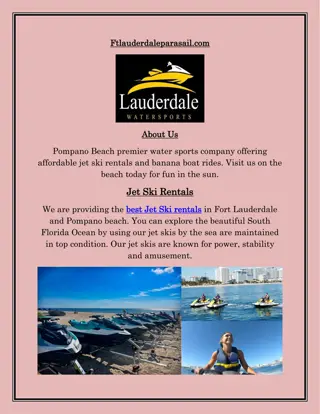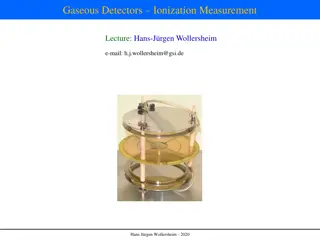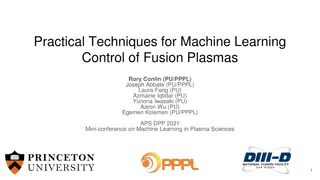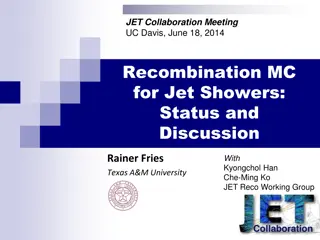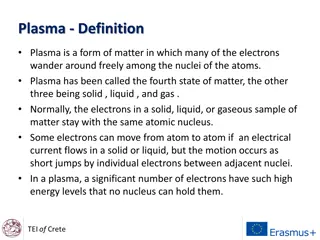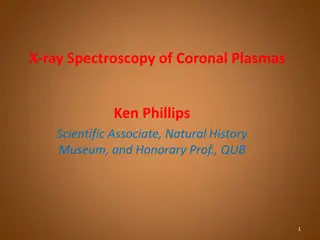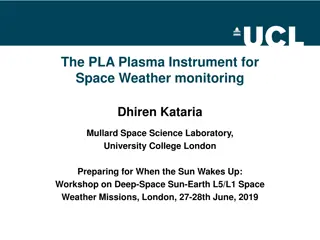Ionization Wave Dynamics of Plasma Jet Contacting Liquid Water
Atmospheric Pressure Plasma Jets (APPJs) are investigated for their potential in biomedical applications through the study of ionization wave dynamics in a plasma jet interacting with liquid water. The experiment involves a controlled environment utilizing TiO2/H2O and laser collisional induced fluorescence (LCIF) for measuring electron density. This research aims to advance understanding of plasma-liquid interactions and inform future modeling efforts for such systems.
Download Presentation

Please find below an Image/Link to download the presentation.
The content on the website is provided AS IS for your information and personal use only. It may not be sold, licensed, or shared on other websites without obtaining consent from the author.If you encounter any issues during the download, it is possible that the publisher has removed the file from their server.
You are allowed to download the files provided on this website for personal or commercial use, subject to the condition that they are used lawfully. All files are the property of their respective owners.
The content on the website is provided AS IS for your information and personal use only. It may not be sold, licensed, or shared on other websites without obtaining consent from the author.
E N D
Presentation Transcript
IONIZATION WAVE DYNAMICS OF A PLASMA JET IN CONTACT WITH LIQUID WATER* Amanda M. Lietz1, Edward V. Barnat2, Caroline Winters2, John E. Foster1 and Mark J. Kushner1 1University of Michigan Ann Arbor, MI 48109-2122 USA lietz@umich.edu 2Sandia National Laboratories Albuquerque, NM 87123 USA 71st Annual Gaseous Electronics Conference Portland, OR, USA. 8 November 2018 Work supported by the US Dept. of Energy Office of Fusion Energy Science and National Science Foundation. Sandia National Laboratories is a multimission laboratory managed and operated by National Technology and Engineering Solutions of Sandia LLC, a wholly owned subsidiary of Honeywell International Inc. for the U.S. Department of Energy s National Nuclear Security Administration under contract DE-NA0003525.
AGENDA Plasma Jets onto Liquids Description of Experiment Laser Collisional Induced Fluorescence (LCIF) Plasma Jet Contacting TiO2 (? ?r = 80) Plasma Jet Contacting Liquid Water Modeling and Future Work University of Michigan Institute for Plasma Science & Engr. GEC_2018
ATMOSPHERIC PRESSURE PLASMA JETS Atmospheric pressure plasma jets (APPJs) are a popular source of chemistry for biomedical applications. The plasma propagates as an ionization wave (IW) that is repetitively pulsed. The IW gives rise to reactive oxygen and nitrogen species (RONS) which produce the biological effect. Objective: Investigation IW dynamics in a plasma jet contacting liquid in a well controlled environment. S. Mohades, et al., Physics of Plasmas 22, 122001 (2015). University of Michigan Institute for Plasma Science & Engr. GEC_2018
EXPERIMENTAL SETUP TiO2/H2O Annular powered electrode inside the center tube. Placing the APPJ in a vacuum chamber - consistent and controlled chemistry, ground planes, and gas flow. Coaxial tube enables a gas shroud control environment independently of gas in main jet. University of Michigan Institute for Plasma Science & Engr. GEC_2018
LASER COLLISIONAL INDUCED FLUORESCENCE (LCIF) An ultrashort pulse laser (<100 fs) was used to measure the electron density with high time resolution. Electrons collide with laser excited He(33P) e + He(33P) ne is proportional to ratio of LIF signals (588 nm / 389 nm) Sufficient He(23S) density is critical for accurate LCIF data. LCIF was initially developed for pure He, and extended to mixtures for this study of APPJs. He(33D) + e Barnat and Fierro, J. Phys. D: Appl. Phys., 50, 14LT01 (2017). University of Michigan Institute for Plasma Science & Engr. GEC_2018
BASE CASE +6 kV 380 ns pulse, 100 ns rise 200 Torr Faster dynamics (for modeling) Lower background LCIF signal (for experiment) 500 sccm He in center tube 0.75% H2O in He in shroud, 500 sccm Gap to target: 7.5 mm Substrate: Liquid water or TiO2 2.5 mm thick (same / 0) Current measured at ground electrode under water/TiO2. Shroud Tube Central Tube Imaging Region TiO2/Liquid University of Michigan Institute for Plasma Science & Engr. GEC_2018
HUMID He SHROUD 2.3% H2O in shroud Pure He To center of jet MFC #1 MFC #2 To shroud MFC #3 Humid He shroud confines the jet, much like operating with surrounding air, while being compatible with LCIF measurements. First bubbler oversaturates water vapor, second bubbler removes excess. Temperature of second bubbler determines humidity of gas. University of Michigan Institute for Plasma Science & Engr. Animation Slide GEC_2018
LCIF IN HUMID He 6 kV, 430 ns pulse Center: 500 sccm He Shroud: 500 sccm He/H2O = 97.7/2.3 t = 230 ns, 30 ns after IW contacts surface Moving away from He core, there are fewer He(23S), LIF signal decreases. He(23S) + H2O He + H2O+ + e In regions of high H2O concentration, there may be significant ne which is not detectable due to low He(23S). Ratio = 1 ne 4 1012 cm-3 University of Michigan Institute for Plasma Science & Engr. GEC_2018
TiO2: OPTICAL EMISSION He(33P) H? ? TiO2 substrate 5 ns ICCD gate, He(33P) He(23S): 389 nm, H emission: 656 nm Line of sight imaging (not Abel inverted). Even He(33P) emission, indicating an annular electron density. Surface ionization wave (SIW) forms after IW contacts the surface. University of Michigan Institute for Plasma Science & Engr. GEC_2018
TiO2: ELECTRON DENSITY Electron density profile is annular. Photons from the discharge (He* or He2*) ionize H2O. Photoionization selectively occurs in the mixing region of the pure He with the humid He. After IW contacts the surface and a restrike occurs, the electron density nearly doubles. Ratio = 1 ne 4 1012 cm-3 University of Michigan Institute for Plasma Science & Engr. GEC_2018
WATER: OPTICAL EMISSION He(33P) H? ? Water substrate. 5 ns ICCD gate Evaporation results in much higher concentrations of H2O enabling more photoionization and Penning ionization. IW contacts surface 5 ns earlier than for TiO2 substrate. Plasma dims at 230 ns, after contacting the surface. University of Michigan Institute for Plasma Science & Engr. GEC_2018
WATER: ELECTRON DENSITY Water substrate. Electron density (ne) is again annular due to photoionization and Penning ionization of surrounding water vapor. SIW is not visible by LCIF because high H2O density near the surface depletes He(23S). He(23S) + H2O He + H2O+ + e Electron density is slightly higher than for TiO2 because of higher water vapor density. Ratio = 1 ne 4 1012 cm-3 University of Michigan Institute for Plasma Science & Engr. GEC_2018
WATER vs. TiO2 With water base, magnitude of forward current is higher, reverse current is lower. Forward current enhanced by humidity. Electrons/ions solvate into the water while being physisorbed on TiO2. Water less likely to support electron emission to support reverse of current. Evaporation produces higher water concentrations near surface resulting in lower mobility, thinner SIW. Plasma dims after IW contacts liquid surface. University of Michigan Institute for Plasma Science & Engr. Animation Slide GEC_2018
MODELING LIQUID INTERACTIONS Cylindrically symmetric. Modeling work ongoing. Same parameters as experiment. nonPDPSIM 2-dimensional plasma hydrodynamics model Photoionization and photoemission from surfaces are critical in positive IW propagation. Surface ionization wave develops along the liquid surface. Electron density profile is annular. University of Michigan Institute for Plasma Science & Engr. GEC_2018
CONCLUDING REMARKS An ionization wave exiting a He plasma jet into a humid environment is annular due to Penning ionization and photoionization at the boundary. Plasma in contact with water vs TiO2 (same / 0) are distinguishable from electrical I-V traces. Mild humidity above the water produces larger forward current. Solvation of electrons/ions in water and larger humidity above water result in lower reverse current. SIWs propagating over a liquid surface are thinner due to the lower mobility of electrons in a saturated water vapor environment. University of Michigan Institute for Plasma Science & Engr. GEC_2018
